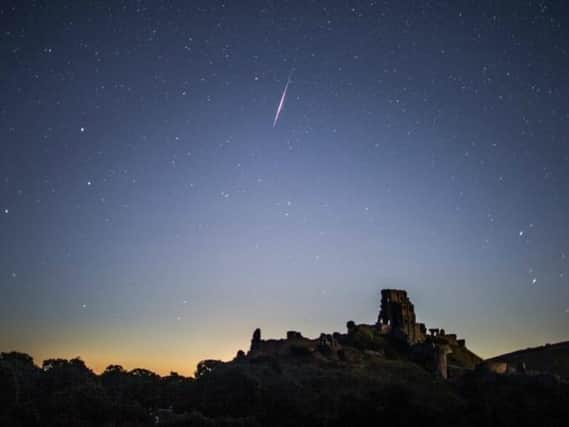Perseid meteor shower: what is it, where can I see it and when are the showers?


The shower remains a popular attraction for star gazers across the world, with many gathering outside throughout the month to catch a glimpse.
Named after the notable constellation Perseus, Perseid is one of the more readily visible showers with most being able to see it without using any form of technology.
Advertisement
Hide AdAdvertisement
Hide AdThis year Perseids is even more significant on the astronomical calendar, with the Moon' s presence in its waxing crescent phase resulting in an even brighter display than usual.
Today is the peak of the shower with the bright lights most visible tonight.
Here's everything you need to know about this month's spectacle.
What is it?
The Perseid meteor shower is an iconic shower associated with the comet Swift–Tuttle.
Advertisement
Hide AdAdvertisement
Hide AdAs the Earth collides with a long trail of debris left behind by Swift-Tuttle, sparks begin to fly in the atmosphere.
It is these sparks that make up the shower we then see on Earth during August.
When is it?
The shower usually happens between July 17 and August 24.
This year it is set to peak on the night between August 12 and August 13, making tonight the best night to watch.
Where can I watch it?
The shower is visible from anywhere, however there are some ways you can ensure you are able to see it clearly.
Advertisement
Hide AdAdvertisement
Hide AdIt is best to search for the clearest and darkest patch of sky close to you in order to see the meteors, avoiding any external light that may hinder your vision.
How do I watch it?
It is important that you give your eyes time to adjust to the darkness so you can see the shower properly.
Once you have done this, lie down on the ground and look up at the sky in the direction of the radiant.
Once you see what you think is Perseids, trace back the path of the meteor and see if it came from the constellation Perseus.
Advertisement
Hide AdAdvertisement
Hide AdThere may be other shooting stars visible tonight, so it is important to trace back the route of any meteor to ensure it is part of the Perseid shower.
Support the YEP and become a subscriber today. Enjoy unlimited access to local news and the latest on Leeds United, With a digital subscription, you see fewer ads, enjoy faster load times, and get access to exclusive newsletters and content. Click here to subscribe.